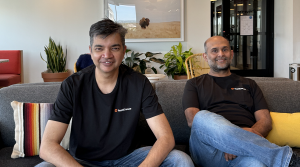How one conservation group uses Big Data to monitor biodiversity | #HPBigData2014
![]() The Conservation International Foundation (CI) wants to use Big Data collection and analytics to reconnect humanity with the natural world. Right now, the conservationists use an army of camera traps, sensors and a specialized software solution to collect information about animals and conditions in tropical rain forests. CI publishes that data publicly, so it can be used as a data-driven early warning system or just shared among interested parties.
The Conservation International Foundation (CI) wants to use Big Data collection and analytics to reconnect humanity with the natural world. Right now, the conservationists use an army of camera traps, sensors and a specialized software solution to collect information about animals and conditions in tropical rain forests. CI publishes that data publicly, so it can be used as a data-driven early warning system or just shared among interested parties.
At Hewlett-Packard, Co.’s HP Vertica Big Data conference, Dave Vellante characterized CI as one of the companies using Big Data to help truly change the world. Vellante sat down with Jorge Ahumada, CI Technical Director and Eric Fegraus, CI Data Collector, on theCUBE to learn a little more about this unique, data-driven non-profit.
Why the data-driven approach?
One of Vellante’s first questions was about how Ahumada wasn’t “in our face” as he described CI’s mission. Ahumada said that he tries to focus on solutions and data: “I think data driven solutions are the way to go because data tells you things and it’s not really taking a view of anything, it’s just looking at the world…”
Because data analytics offer concrete numbers and specific examples, it can hit hard without seeming heavy-handed. “Ultimately, it’s about bringing people into conservation and making people understand that it’s actually a matter of survival. It’s important for our species…”
How CI’s system works
CI provides an excellent source of information that’s useful for conservation and wildlife management. Right now, their main source of data is camera traps set up in the tropical forests, which detect an animal’s presence with a heat-motion sensor. The camera captures stills, then site managers and technicians collect the SD cards from the cameras. Once back at the lab, the site managers and techs use CI’s software to process the images, next, the data and images get sent to servers, then into the pipeline, so CI can run analytics on them.
CI’s software is homegrown, crafted with aid from statisticians, camera experts, and people in the field. Fegraus explained that it’s designed to facilitate image annotation: “We create a whole suite of meta data around the image, we examine all the EXIF data within the image itself, and we store it in the database.” Savvy, but the CI software tool still requires human expertise to tag the species and number of animals in the image. All said, Fegraus says that CI stores “a couple million images.”
Turning data into action
After the images are uploaded, Vellante asked, “Who has access to it? How do you use it? How is it organized? Do you ever delete data?”
“No,” Fegraus said, “We never delete data. It gets curated. It gets turned into the Wildlife Picture Index. It goes into our analytics system.” This Wildlife Picture Index analytics system is where HP Vertica comes into the CI equation: “It shows the trends of species in the tropical forest over time.” Fegraus also called out that all CI’s data is publicly available, enabling the non-profit to function as a global public resource.
All told, Ahumada said CI collects between 400 and 450 thousand images a year. Fegraus called it at about nine terabytes of data.
The next step, Ahumada continued, is turning that data into action. “This is a key question,” he said, “A lot of people who work in protected areas though out the world — and especially in the tropical areas — have very little access to information about what’s happening at their park,” so this new tool has opened up a new realm of park management possibilities. The Wildlife Picture Index analytics system helps park workers identify areas of concern in their parks — whether it’s poaching, deforestation, or the effects of climate change — and monitor the results of conservation campaigns.
photo credit: Edgar Barany via photopin cc
A message from John Furrier, co-founder of SiliconANGLE:
Your vote of support is important to us and it helps us keep the content FREE.
One click below supports our mission to provide free, deep, and relevant content.
Join our community on YouTube
Join the community that includes more than 15,000 #CubeAlumni experts, including Amazon.com CEO Andy Jassy, Dell Technologies founder and CEO Michael Dell, Intel CEO Pat Gelsinger, and many more luminaries and experts.
THANK YOU









